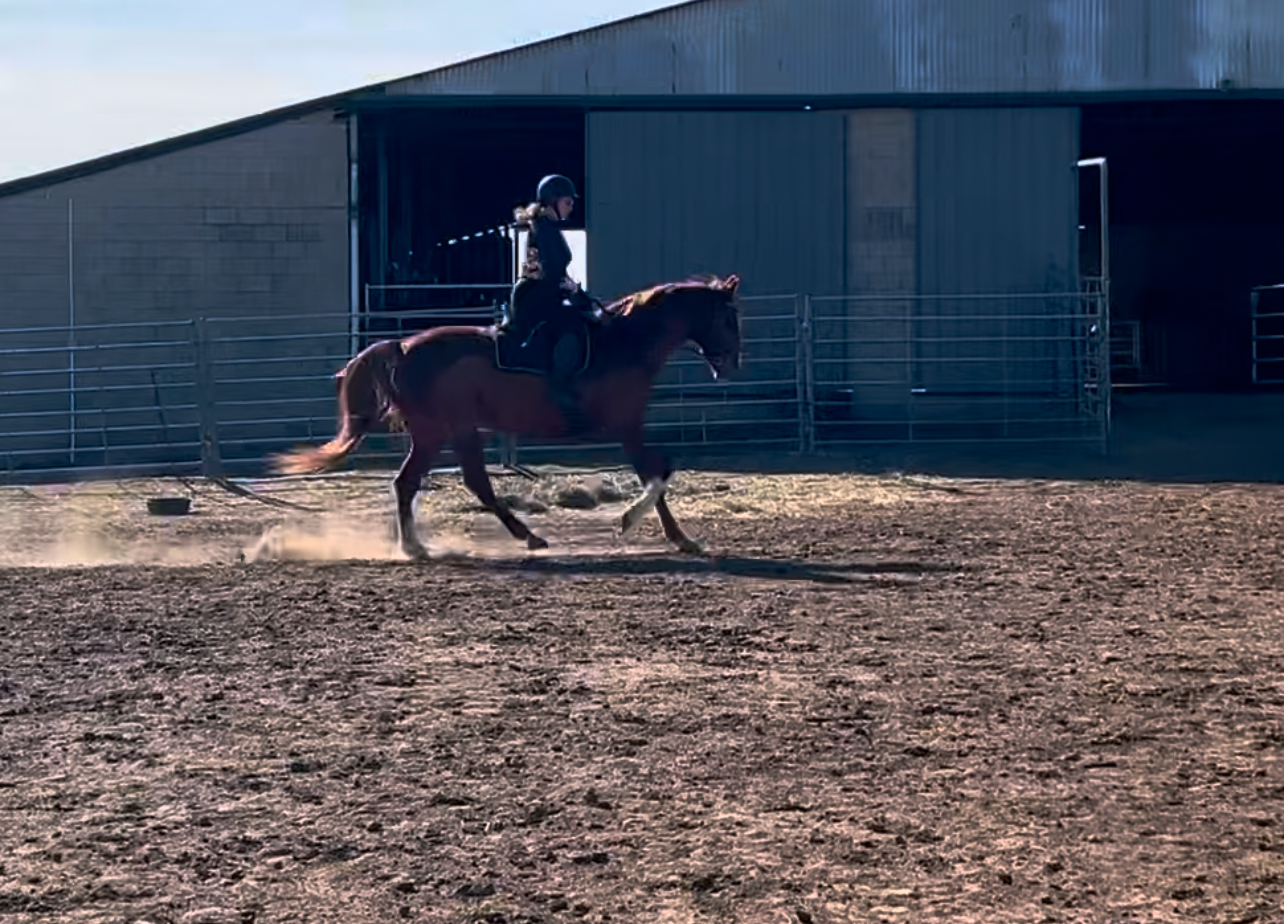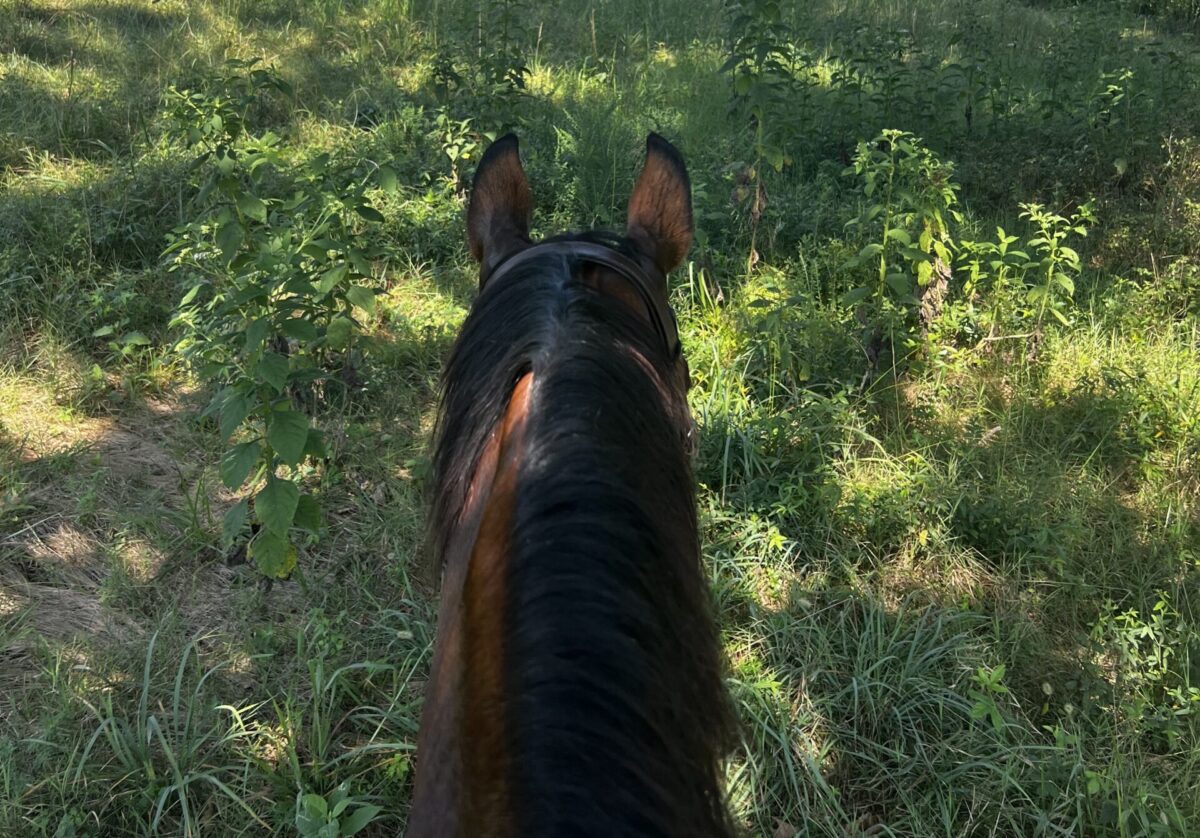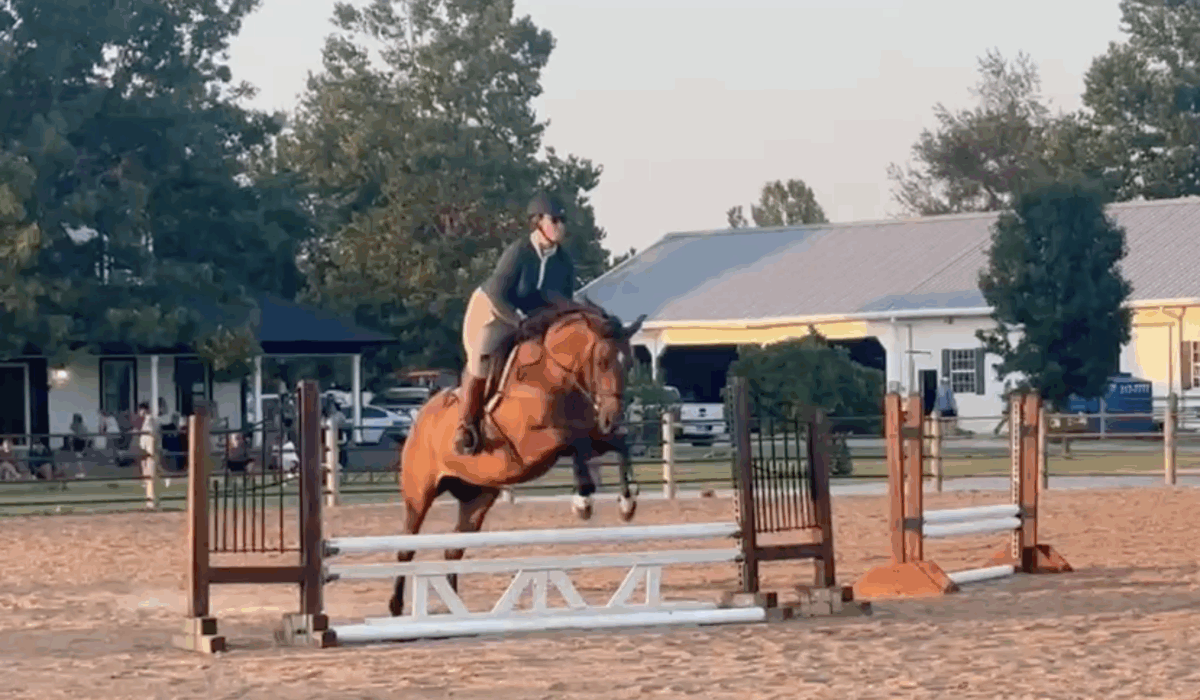Category: Horses
-

Young Adult
Madigan turned seven this summer, and I am tentatively ready to declare him an adult. Of course, he’s technically been an adult horse for years, but he projected an air of immaturity until fairly…
-

Swimming Hole Shenanigans
Last weekend, my friends and I loaded up the horses and attended the local hunt’s annual Swimming Hole Day. They host this event every year, and it’s always fun. The day starts with a…
-

Two Takeaways from Two Schooling Jumper Shows
One of the hunter/jumper barns in Tulsa hosted a schooling jumper series over the summer. They hosted three shows, held on Friday evenings, with divisions ranging from 18 inches to 1 meter. Entry fees…